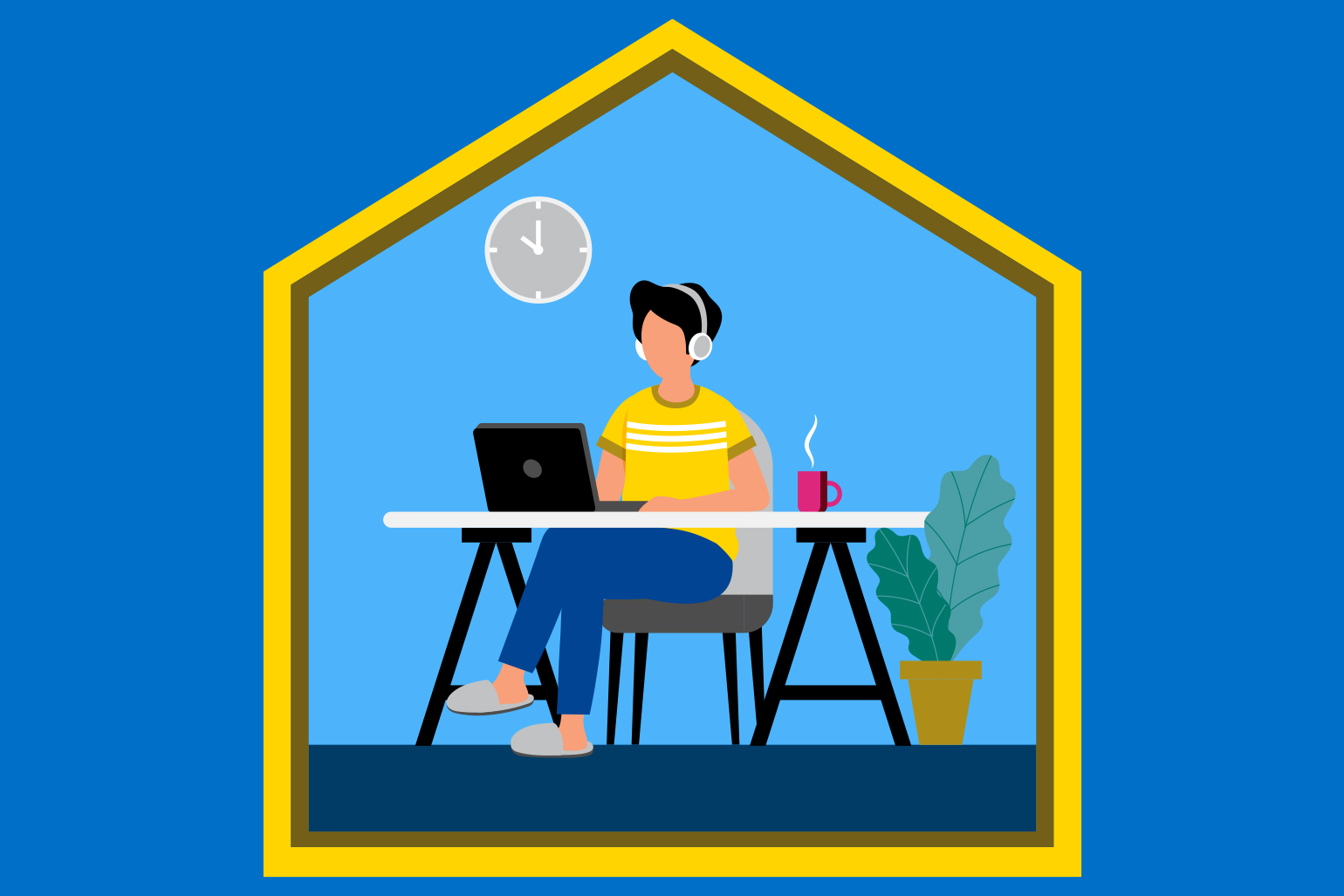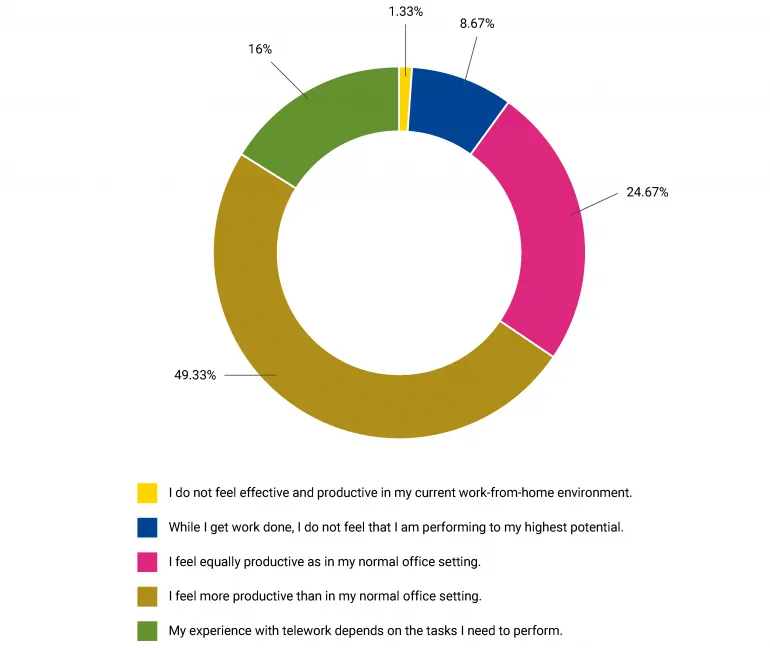Teleworking: Transforming insights into progress

Covid-19 has significantly altered the way we think about work, the workplace, and the workforce. Even the word ‘workplace’ suddenly seems outdated. But crises can often be catalysts for change. The experience gained during this pandemic reveals opportunities and accelerates our transition into the future of work.
In my recent column Inner Workings: When a global health crisis hits home, I announced a survey the ESM conducted in September to look into how extensive, pandemic-related teleworking affected our staff and our ways of working. Today, I can reveal some of the findings of this survey and explain how this will feed our plans for our ‘new normal’ at the ESM.
The pandemic game changer
As a modern and caring employer, teleworking is not new at the ESM. We already allowed staff to work remotely as needed by equipping them with mobile devices and ensuring our systems and network were duly prepared – even for an extended telework scenario.
As a crisis-resolution mechanism ‘ease with uncertainty’ is one of our organisational values. Yet, the sudden transition from one office building to a network of homes has not been without challenge. As we move from an emergency reactive phase to developing a longer-term plan and vision for our ‘future of work’, it is worth learning from our experience and understanding the connection between where people work and how they feel and perform.
It is important to determine what is preferable, from what is now recognised as possible, as we prepare for our ‘new normal’.
Survey takeaways
I was greatly reassured to learn that staff in general think the ESM is managing the crisis well and feel safe. Most staff report a positive experience and even productivity gains from teleworking. Still, the pandemic remains extremely volatile and we need continued focus to adjust quickly to the evolving circumstances.
There is little doubt that uncertainty around the outcome of the pandemic is taking a toll on the mental and emotional wellbeing of our people. Our survey, conducted before prospects for a vaccine grew, identified that worries for oneself, friends and family, social isolation, and concerns for the impact on the global economy are of the utmost concern. In addition to our primary objective of keeping our staff physically safe, ensuring mental health and wellbeing is therefore a priority for our leaders.
Figure 1: Mental barometer

A positive takeaway from the pandemic-induced remote working has been that flexible working arrangements need not come at the expense of results. Our people were able to ensure business continuity and an uninterrupted strong performance despite extended telework.
They welcomed the processes and practices the ESM implemented, changed, or enhanced during this period, and wished for some of these to be continued post-pandemic. For example, they mentioned the benefits of regular stress tests, the use of digital tools for meetings, e-learning offers, electronic signing of documents, reduction of business travel, less paper use and the reduction of our carbon footprint.
Also the telework experience has evolved positively, as was confirmed by 83% of survey respondents. Staff tend to feel even more productive working from home than in the office. This is mainly due to more flexibility in working schedules, less time in commuting, fewer distractions, and a better work-life balance, including time for family and leisure. Going forward, staff would appreciate greater degrees of flexibility in relation to the frequency, duration, and location of telework. Around 42% said they would consider up to 10–12 days of telework per month to be an ideal office–home office balance, with 40% saying there should be no limits to telework.
The survey showed that the ideal conditions for productivity are, however, not identical for everyone. Some acknowledged internet connectivity or the discomfort of furniture impeded their productivity. Others cited distractions such as kids at home, other family members working in the same space, or the blurred lines between personal and professional life.
The question also arose whether working mothers suffer disproportionally when attempting to balance work with additional family responsibilities. In my earlier blog Let’s all be 'each for equal’ I wrote that the so-called double-shift is a significant barrier to achieving equality. Some voices suggest that, on top of the existing imbalances in caregiving responsibilities, there is now also a disproportionate pandemic-related burden for working mothers.[1] For the ESM, keeping women present in the workplace is essential and we will therefore closely monitor this issue and consider actions where necessary.
Figure 2: How productive do staff feel teleworking?

Source: ESM
Furthermore, staff recognise that long-term remote working may have drawbacks. Some worry about the potential corrosion of vital face-to-face connection between colleagues, rapid communication, spontaneous collaboration, learning opportunities, and innovation. While it is not impossible to replicate these same results from home, staff acknowledge that it may take more intentional planning.
In addition, the design of a workspace is fundamental in making it productive, innovative, and collaborative. Further digitalisation and the re-invented lay-out and design of our workplaces will be critical.
A hybrid model where staff would spend some time working from home and some time from the office could become our future model. In this spirit, and with the proper hygiene measures in place, 92% of our staff would support the concept of ‘hot-desking’, a work arrangement in which desks are used by different people at different times, on an ad hoc basis.
Open comments in our survey, however, indicate, that this concept of ‘hot-desking’ could rapidly ‘go cold’ if it does not go hand-in-hand with privacy or personal space in the office to stay focused, a seamless technological transition between the ESM office and home office, and ample opportunities for teamwork and knowledge sharing.
Finally, it became clear from the survey that we will need to find creative ways to replicate social interactions. Our diversity and inclusion efforts should also remain a priority. People are affected by widely varying life, work, and family settings. Embracing these realities, and being inclusive and open to such differences cannot be underrated. Re-engineering the ‘right’ ESM culture also in a virtual or hybrid setting is therefore key for our ‘new normal’.
Preparing for our ‘new normal’
Even if we don’t yet know all the ways the future of work will be different, it is already clear that it brought about a mind-set shift that allows people to view remote work as a ‘new normal’ rather than an occasional opportunity.
As staff transition to remote work, both in response to the pandemic and beyond, there are structural changes that now need to be addressed. The ESM has initiated a corporate project to build our ‘new normal’ at the ESM on the foundation of agility, resilience, collaboration, and inclusion.
Dedicated working groups will further analyse four distinct areas: Greater degrees of remote and flexible work; use of technology and office design; cultural and behavioural shifts; and organisational resilience by design. These working groups are currently mapping their vision based on the observed trends and survey findings.
We will continue transforming our organisation for the better, and make it ready for a sustainable Covid-19 future. To be continued.
Acknowledgement
The author would like to thank colleagues: David Blazquez Vila, Sharon Bowman, Raquel Calero, Yana Djoneva, Sharman Esarey, Kai Hennen, George Matlock, Linh Ngo, Laure Salducci and Dave Wallace for contributing to this blog.
Footnotes
New UN Women global data suggests that the pandemic threatens to wipe-out 25 years of increasing gender equality.
About the ESM blog: The blog is a forum for the views of the European Stability Mechanism (ESM) staff and officials on economic, financial and policy issues of the day. The views expressed are those of the author(s) and do not necessarily represent the views of the ESM and its Board of Governors, Board of Directors or the Management Board.

